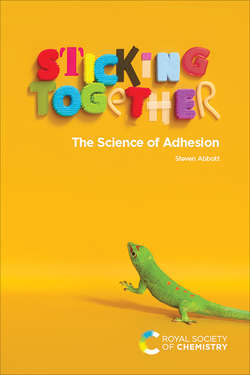Читать книгу Sticking Together - Steven Abbott - Страница 5
На сайте Литреса книга снята с продажи.
ОглавлениеPreface
When I accidentally knocked over a nondescript jug and broke its handle, I assumed I could throw it in the bin. But no. It was my wife's orchid-watering jug and she made it clear that she would be most unimpressed if the book I was writing couldn't tell me the best way to fix it. That incident caused me to rethink my priorities. Of course, I was trying to make my writing interesting and of course I was trying to make the science clear and correct. However, was the book also going to be useful? It turned out in this case that what I'd already written about fixing handles was helpful and I could make a rational choice of a low viscosity (cheap) superglue, using a puff of breath to ensure enough catalyst (water) and a quick, decisive press and hold. I was also alert to the downsides of superglue – there was no going back. What I failed to do was practice the swift motions required for gluing the second piece of the handle. The result is a solid handle, fit for watering orchids, but with a crack that is more unsightly than it should have been.
I also wanted the book to be more than just a book. A useful working assumption is “If it's not on YouTube then it doesn't exist”. To which we need to add, “If ‘it’ is more than 5 minutes then no one will watch it so it still doesn't exist”. So, the book comes with its own YouTube playlist (rsc.li/books-sticking-together) of informal, short videos which bring some of the science to life. You'll find a video about what's being discussed wherever you see the icon:
I already had an extra resource for the expert reader. Many times in the book, I provide a link to an app page on my large Practical Science website. The page does not just contain the science and formulae; it brings the science to life with sliders, graphs and outputs to allow the user to get a feel for what the science means. Modern web infrastructure is so powerful that even on your smartphone you can explore some fairly complex science via these apps if you wish to know a little more.
Going back to the question of whether the book would be useful, I needed to learn from those with experience of using adhesives in many ways unfamiliar to me. I am especially grateful to Rob Johnson, Denis MacSweeny, William Newman-Sanders, Jonathan Parker and Lt-Col Chris Urdzik of the USAF for patiently guiding me through their extensive experiences with adhesives in the real world.
I needed access to some professional testing equipment for the YouTube videos. I am most grateful to Elliot Allen, Vivian Christogianni and their colleagues at Sugru for making their lab and equipment available.
Dr Steven Howe provided the idea, and the hands-on skills, to demonstrate the complexities of the lap shear test.
I wanted to avoid “sciencey” illustrations and was delighted that Mark Abbott was able to translate my technical illustrations and scribbled suggestions into his distinctive informal-looking illustrations that make up the majority of graphics in the book.
I needed a style guide who had a rare combination of a good grasp of English style along with the ability to provide an informed critique of the scientific story as it unfolded. I'm grateful that Sebastian Abbott took on that tough dual role and provided innumerable improvements to the style and content.
Ella Abbott was an able assistant for many of the videos and played an important on-screen role in one of them.
Drew Gwilliams and Katie Morrey at the Royal Society of Chemistry were most helpful and supportive in steering the process from its earliest tentative stage through to completion.
You will encounter me throughout the book. I've written it in a first-person style because I hate hiding behind a supposedly objective neutral authorship. I've worked for most of my life in real jobs in industry while having the privilege of being a Visiting Professor at the University of Leeds which has given me access to the world of academia. Since 2009, I have been an independent scientist working on topics that interest me, learning new things, helping solve technical problems around the world and, as much as possible, and giving away my knowledge via free apps and eBooks. You will find that a lot of the bad science that is out there irritates me. My chief irritation is that the bad science doesn't help anyone solve problems. The bad science is unnecessary because the real science of adhesion is not at all difficult and has the distinct advantage that it makes you much better at sticking things together.
For those who want to read about the science in more detail, with extensive links to the apps to make it easier to understand, my book Adhesion Science: Principles and Practice is available from DesTECH publications.
